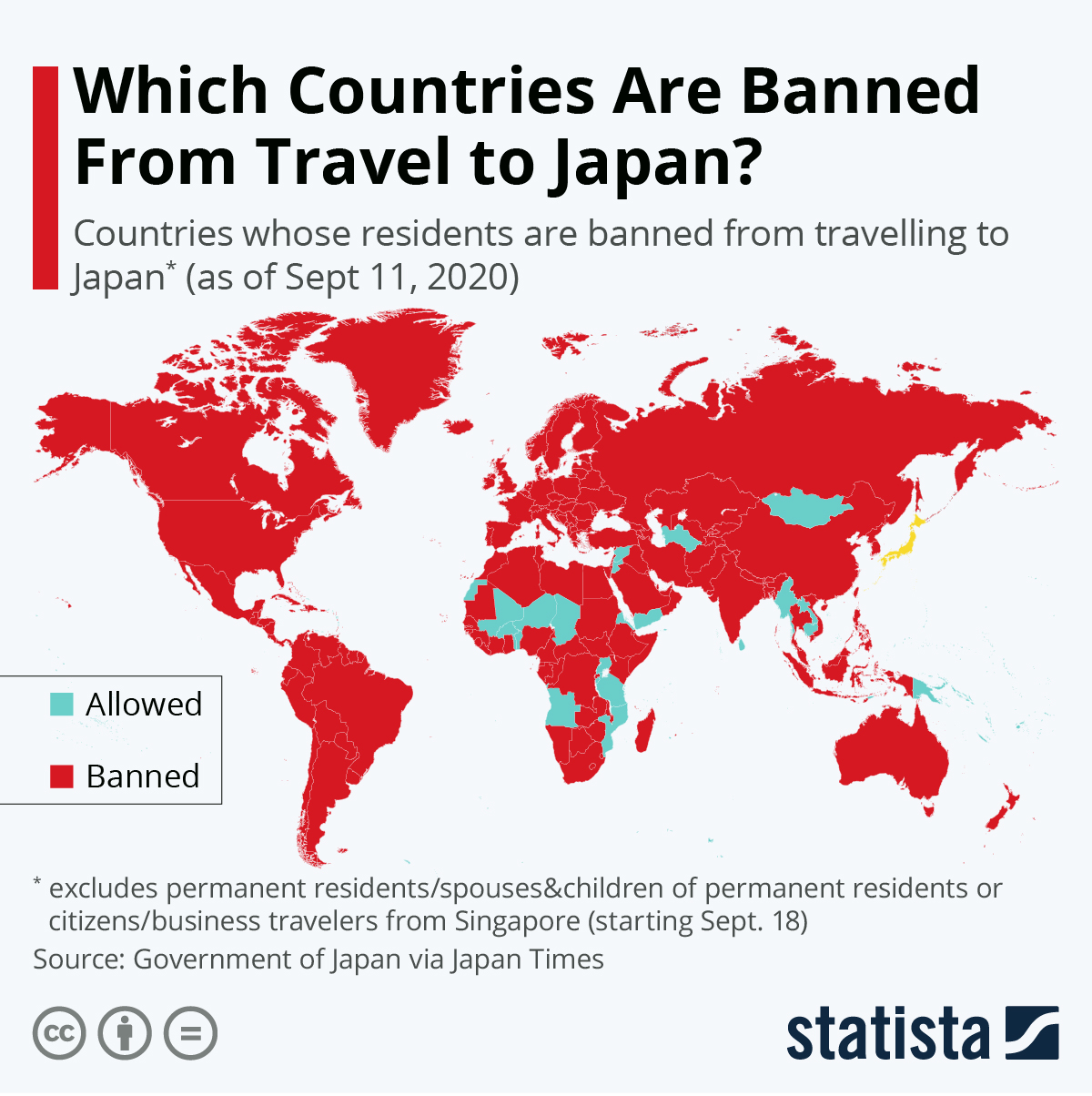An astonishing 166 countries and territories on all continents can currently be found on the Japanese government's list of who is banned from entering the country amid the COVID-19 pandemic. The ban extends to recreational and business travelers as well as international students and work visa holders who are not residents. Starting Sept. 18, essential business and official travelers from Singapore will be allowed to enter Japan again under a reciprocal agreement. Travel from North Korea to Japan was banned even before the pandemic.
Currently, most countries not affected by the ban are in fact located in Africa, a continent where the coronavirus pandemic has not caused as many infections as elsewhere. Countries in Asia like Mongolia, Myanmar and Laos are also not banned from Japan, as are far-flung places like Papua New Guinea and Pacific island nations.
The ban is officially dubbed a re-entry ban since all groups are allowed to remain in the country but are not allowed to enter or re-enter it once they left. Exempt are permanent residents, their children and spouses as well as the foreign spouses and children of Japanese citizens, but only if they left Japan before the ban for their destination country was implemented. If they have left after the fact, even these groups are only allowed to re-enter under special circumstances like medical issues or family-related circumstances, showing the strict measures Japan is applying to keep the coronavirus at bay.
Japan had first stabilized new infections with the coronavirus in early May but has stayed vigilant – for good reason. Cases the country reached a new high of more than 1,700 daily new cases at the end of July and have stayed elevated since. The country has continued to re-tighten restrictions as necessary and keeps updating the list of countries banned from travelling to Japan.





















